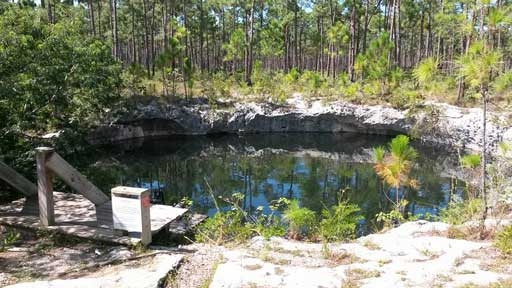
Researchers in the Bahamas discovered a surprisingly well-preserved specimen of an extinct giant tortoise that died about 1,000 years ago.
The tortoise species, named Chelonoidis alburyorum, is related to the Chaco tortoise from South America and the endangered giant tortoise which is found only on the Galapagos Islands. Caribbean giant tortoises, like this one, became extinct around 780 years ago, shortly after humans first arrived in the area and began hunting them for food.

This is the first time scientists have collected ancient DNA from an extinct tropical species, since the warm, humid waters of the Caribbean are usually not the best environment for preserving DNA.
“The two things that are really good for the long-term preservation of DNA are coldness and dryness,” David Steadman, one of the lead authors of the study said in a statement. “And the tropics typically provide neither one.”
The specimen was discovered in a blue hole called Sawmill Sink on the Bahamas’ Abaco Island, where divers have collected 95 different vertebrate species, many of which are extinct on the island. The toxic water in the sinkhole is completely devoid of oxygen below 70 feet, which helps to preserve the fossils.

Although the shell showed crocodile bite marks, the scientists were able to use DNA and collagen from inside the bones to piece together significant details about the tortoise’s anatomy and evolutionary context.
“This is the first time anyone has been able to put a tropical species into an evolutionary context with [genetic] data,” said Steadman. “And being able to fit together the tortoise’s evolutionary history will help us better understand today’s tropical species, many of which are endangered.”
Ever wondered how turtles and tortoises evolved that shell? Watch:




